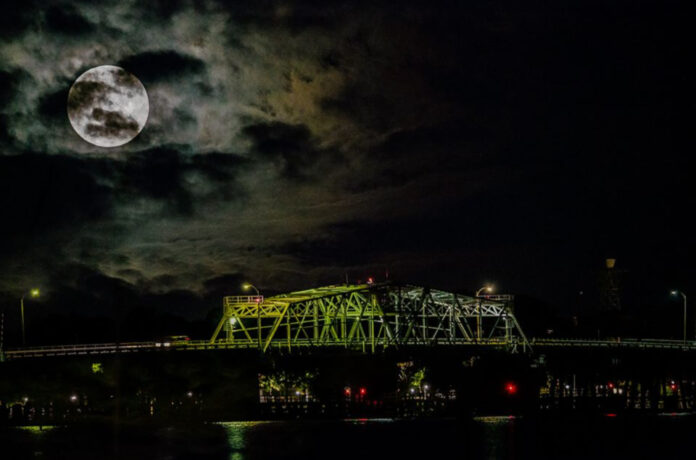Take a look up to the heavens and you’ll see the first supermoon of the year in the sky over Beaufort this week. July’s full moon marks the first of four supermoons in a row in 2023. The Super Buck Moon is set to light up the night sky starting on Monday when its at its closest point, and visible to skywatchers provided the weather remains clear.
4th of July Fireworks won’t be the only thing lighting up the sky on Tuesday night.
“The full Moon in July is called the Buck Moon because the antlers of male deer (bucks) are in full-growth mode at this time,” as The Old Farmer’s Almanac says.
Like many other full moons, July’s Buck Moon derives from Native Americans who first published its name in the Maine Farmer’s Almanac in the 1930s.
“According to this almanac, as the full moon in July – the Algonquin tribes in what is now the northeastern United States called this full moon the Buck Moon,” per NASA. “Early summer is normally when the new antlers of buck deer push out of their foreheads in coatings of velvety fur. They also called this the Thunder Moon because of early summer’s frequent thunderstorms.”
In addition to “Buck,” other titles for this moon include “Thunder Moon,” “Mead Moon,” and “Hay Moon.” Europeans recognize this month’s full moon as the latter because haymaking typically takes place in June and July, NASA noted.
The moon will appear full for three days, starting on Saturday evening and ending Tuesday night. The fullest and largest phase of July’s Buck Moon will rise at 7:10 p.m. on Monday, July 3rd, and will set at 4:33 a.m. on Tuesday July 4th.
The Summer of Supermoons
According to Space.com, after July, the next supermoon will rise on Tuesday, August 1st in the form of the Full Sturgeon Moon.
August will see a second supermoon in the form of the Blue Moon on August 30th. This will be a particularly special event for moonwatchers as it will see the moon at its closest during this “supermoon summer” period, at just 222,043 miles (357,344 km) away.
Just after summer 2023 draws to a close on September 23rd, so too does this festival of supermoons, which ends on September 28th with the rise of September’s Full Corn Moon when the moon will be 224,657 miles (361,552 km) from Earth.
The Full Corn Moon will also mark the final supermoon of 2023, with the next supermoon scheduled to fall on Sept. 18, 2024,
What makes this particular buck moon a supermoon is something else. Supermoons by definition happen “when a full moon coincides with the Moon’s closest approach to Earth in its elliptical orbit, a point known as perigee,” according to NASA.
“During every 27-day orbit around Earth, the Moon reaches both its perigee, about 226,000 miles (363,300 km) from Earth, and its farthest point, or apogee, about 251,000 miles (405,500 km) from Earth.”
Supermoons in general appear 17% bigger and 30% brighter than when the moon is at its farthest point away from Earth, according to NASA. Supermoons are slightly bigger and brighter than most full moons, too. Just because it’s bigger and brighter doesn’t necessarily mean you’ll see it unaided, so binoculars may give you a better view.
Enjoy the view of the supermoon, Beaufort!










